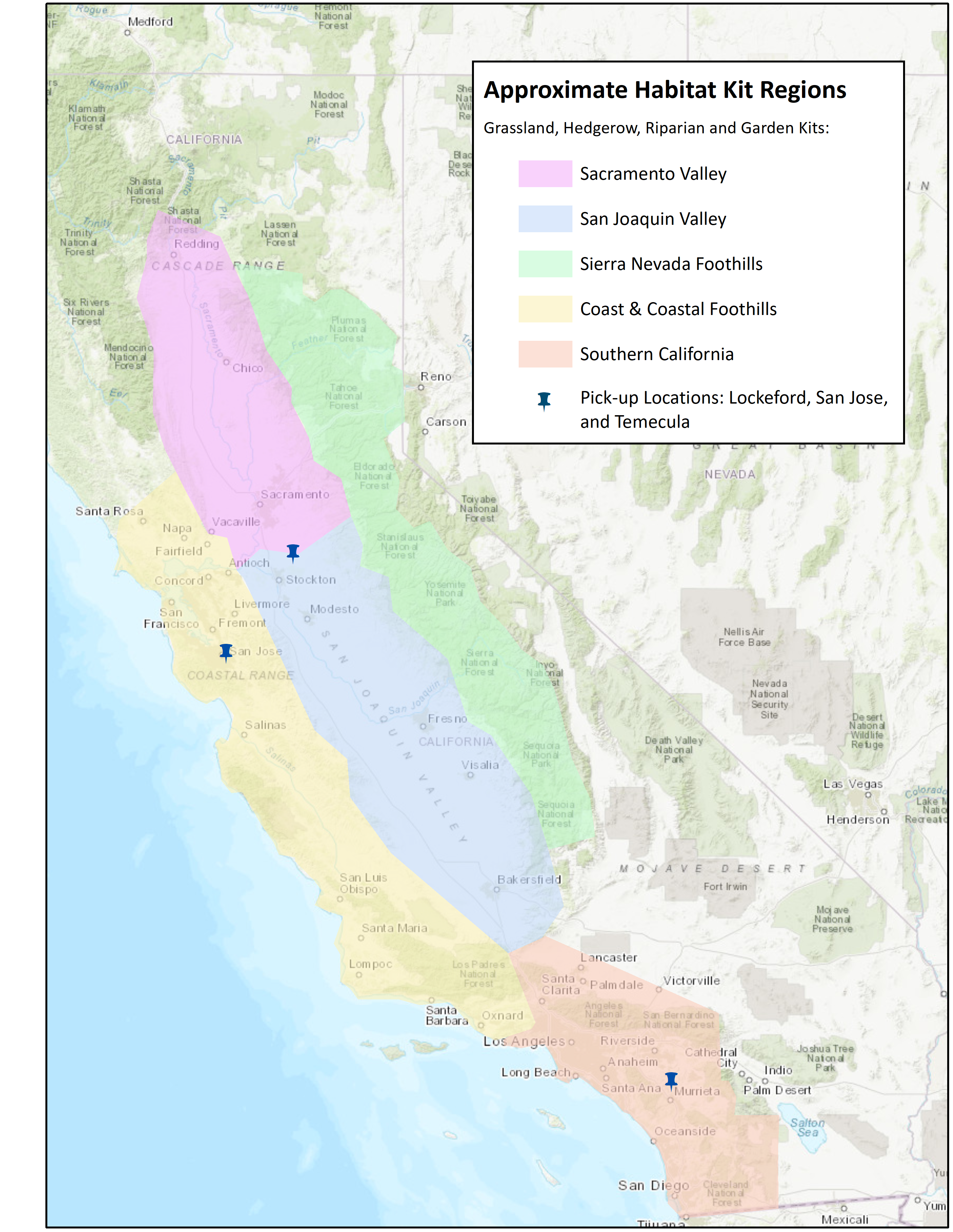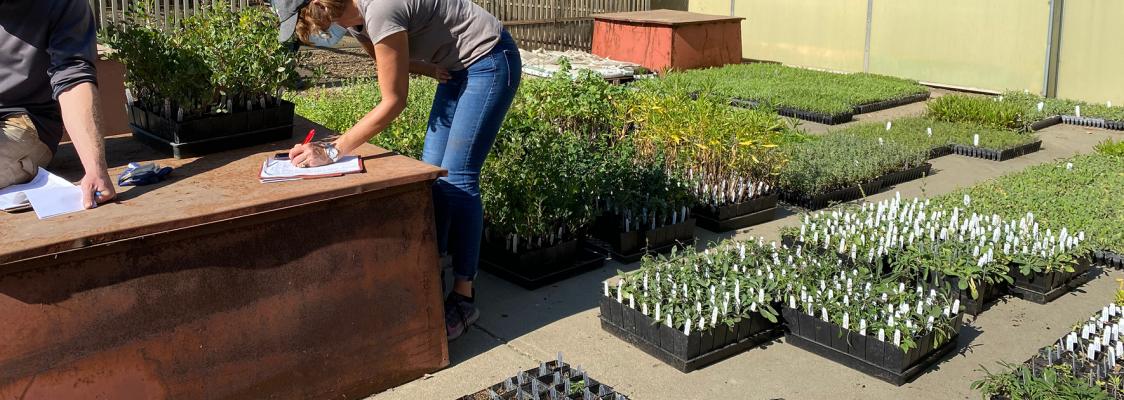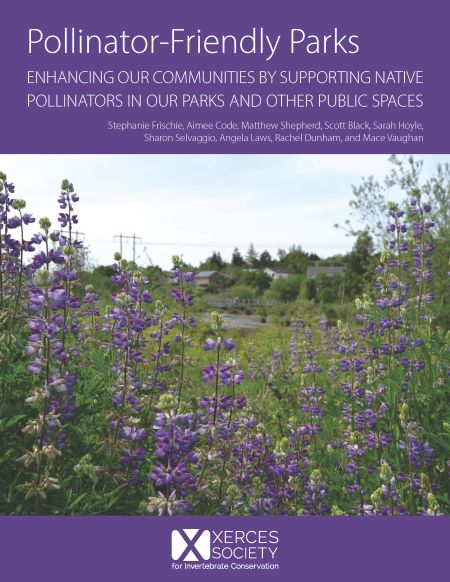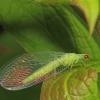Many pollinating insects are declining in California, including bees and butterflies. The population of western monarch butterflies has declined 95% since the 1980s, due to a variety of reasons, including habitat loss and degradation, pesticides, and climate change. One important step we can take to protect these important animals is to increase the amount of habitat available to these species. Xerces Society habitat kits provide climate-smart native plants to project partners who are willing to provide the time, labor, and land to develop pollinator habitats. Xerces’ California Habitat kits have already provided over 100,000 plants to partners and pollinators across California. We are excited to continue this work!
Información sobre el programa de kits en español
To learn more about the California Habitat Kit program, please watch this informational video.
Qualifying Projects
Kits are intended to be used to create or enhance monarch and pollinator habitat on working lands, public lands, tribal lands and private/non-working lands recovering from wildfires, with landowner or land manager collaboration. This includes farms, ranches, tribal land, post-wildfire recovery areas, urban farms or gardens, city parks, school gardens or other public areas. We encourage projects that will benefit historically underserved or underrepresented communities.
The kits are not intended to be used in home gardens.
We encourage stewards of working lands to partner with organizations or entities that can provide additional technical support for their projects, such as Resource Conservation Districts (RCDs), The Natural Resources Conservation Service (NRCS) or other conservation organizations.
If you have questions about your project’s suitability or requests for technical guidance on your project, please email us at [email protected].
Qualifying Locations

We have kits available for Sacramento Valley, San Joaquin Valley, Sierra Nevada Foothills, Central Coast and Coastal Foothills, and Southern California regions.
If you do not see your region listed, we do not have kits suitable for your region.
Participation Process
Proposals
We are accepting proposals for 2024 from February 12 through April 5. Project proposal forms are available in English and Spanish.
The Project Proposal Form collects information about where the kit will be planted, the size of the area, and plans for site preparation, management, and maintenance, as well as plans for pesticide risk mitigation and outreach opportunities, if applicable. A limited number of habitat kits are available and we receive more requests than we are able to fulfill. Participants are selected based on the project information set out in proposals as well as considerations such as location and habitat implementation and management plans.
Single kits are not designed to be divided into multiple projects, and we are not able to provide partial kits or to customize kits for specific projects. Participants must be able to use the entire kit/ minimum order in one project but it can be divided up within the area. For example, several plantings within one county park, or several areas on a farm or ranch. If applying for kits for multiple projects, please fill out a separate application for each project.
Submit a project proposal in English
Complete una propuesta de proyecto en español
Distribution
Kits will be available for pick-up in late October or early November. You will be provided with habitat kit pick up days and locations if/when your proposal is awarded a kit(s). There will be a range of dates (usually around 4 days) and times when the kits will be available for pick-up.
- Kits for the Sacramento Valley, the San Joaquin Valley and the Sierra Nevada Foothills will be available for pick-up at the USDA Plant Materials Center in Lockeford, CA
- Kits for the Central coast and coastal foothills kits will be available for pick-up at Our City Forest in San Jose, CA.
- Kits for Southern California will be available for pick-up at the Temecula Olive Oil Company in Temecula, CA.
Planting, Maintenance, Reporting
You are required to plant the kit within a reasonable amount of time after receiving the kit (1–2 months), and to follow the plan outlined in your proposal. Once the kit is planted, you must contact us to let us know the kit is planted, and share some photos. A brief report (~1–2 pages) is due the following June which should include information such as the amount of area planted and the establishment success of the project. If awarded a kit, you will receive a project partner collaborative agreement that outlines all requirements.
Available Kits
We have several types of habitat kits available and the contents of each kit type varies by region. Some kit types are only available in certain regions because we want to work with local plant and seed producers and use local plant ecotypes in our habitat kits as much as possible.
All kits are comprised of native plants that have been identified as having high value to monarchs and other pollinators and are grown without the use of systemic pesticides that may be harmful to pollinators. You may request multiple kits if needed for your project.
Milkweed-free kit variations are sometimes available for projects that are within ~1 mile of the coast (south of Santa Barbara) or within ~5 miles of the coast (north of Santa Barbara), where planting milkweed is not recommended.
Wildflower Grassland Kits
This kit type contains 600 small herbaceous transplants (mostly ‘plugs’) including milkweed, flowering forbs, and some grasses. Each kit will cover approximately 5,400 ft2 if planted on 3 ft. spacing. Minimum order of 1 kit / project. Additional kits can be requested for larger projects.
- Sacramento Valley: Wildflower grassland kit contents
- San Joaquin Valley: Wildflower grassland kit contents
- Central Coast and Coastal Foothills:
- Sierra Nevada Foothills: Wildflower grassland kit contents
- Not available for Southern California
Riparian Wildflower Kits
This kit type contains 600 small herbaceous transplants (mostly ‘plugs’), including milkweed, flowering forbs and some grasses/sedges. This kit contains plants that do well in riparian areas and can tolerate some seasonal flooding. Each kit will cover 5,400 ft2 if planted on 3 ft. spacing. Minimum order of 1 kit / project. Additional kits can be requested for larger projects.
- Sacramento Valley: Riparian wildflower kit contents
- San Joaquin Valley: Riparian wildflower kit contents
- Central Coast and Coastal Foothills:
- Sierra Nevada Foothills: Riparian wildflower kit contents
- Not available for Southern California
Hedgerow Kits
This kit type contains 90 woody and herbaceous transplants including flowering shrubs and forbs, milkweed and native bunch grasses. Each kit will cover approximately 540 linear ft/ 5,400 ft2 if planted on 6 ft spacing. Container sizes range from tree band to 1 gal. Minimum order of 1 kit / project. Additional kits can be requested for larger projects.
- Sacramento Valley: Hedgerow kit contents
- San Joaquin Valley: Hedgerow kit contents
- Central Coast and Coastal Foothills: Hedgerow kit contents
- Sierra Nevada Foothills: Hedgerow kit contents
- Southern California: Hedgerow kit contents
Riparian Hedgerow Kits
This kit type contains 90 woody and herbaceous transplants including flowering shrubs and forbs, milkweed and native bunch grasses / sedges. Each kit will cover approximately 540 linear ft/ 5,400 ft2 if planted on 6 ft spacing. This kit contains plants that do well in riparian areas and can tolerate some seasonal flooding. Container sizes range from tree band to 1 gal. Minimum order of 1 kit / project. Additional kits can be requested for larger projects.
- Sacramento Valley: Riparian hedgerow kit contents
- San Joaquin Valley: Riparian hedgerow kit contents
- Central Coast and Coastal Foothills:
- Sierra Nevada Foothills: Riparian hedgerow kit contents
- Southern California: Riparian hedgerow kit contents
Garden Kits
This kit type contains 36 herbaceous transplants including milkweed, flowering forbs, and some grasses. Each kit will cover approximately 576 ft2 when planted on 4 ft spacing. Container sizes range from tree band to 1 gal. Minimum order of 1 kit/ project. Additional kits can be requested for larger projects.
- Sacramento Valley: Garden kit contents
- San Joaquin Valley: Garden kit contents
- Central Coast and Coastal Foothills:
- Sierra Nevada Foothills: Garden kit contents
- Southern California:
More Information About Kits
Frequently Asked Questions
Who should I contact if I have questions?
You can contact us at [email protected] with any questions about our California habitat kit program.
How do I participate in the Habitat Kit Program?
Project proposals for California Monarch and Pollinator Habitat Kits will be available each year in early spring. The form asks for information about where the kit will be planted, size of the area, and plans for site preparation, management, and maintenance, as well as plans for pesticide risk mitigation and outreach opportunities, if applicable. We have a webinar with tips on filling out the project proposal form.
Can I have the kit delivered to me?
Kit delivery is not available. You must pick up your kit from one of our kit distribution locations (Lockeford, San Jose, or Temecula, CA).
How did you decide what plants to include in the kits?
The plant species included in the kits have been chosen based on monarch nectaring observations compiled from numerous sources, including published and technical reports, research datasets, and personal communications with monarch researchers, botanists, and other experts. Visitation data provides good general guidance on which plants are preferred by monarchs. Additional factors, such as availability, climate adaptiveness, regional and site suitability and general pollinator attractiveness, were also taken into consideration. We also include important host and nectar plants for other declining pollinators whenever possible. All plant species in the habitat kits are native to California.
I would like to create a pollinator garden at a school (or other public place). Which kit type should I choose?
The Garden Kits are most appropriate for creating a small pollinator garden because they are smaller kits and have a diversity of plants. The wildflower grassland kits are too large for a small pollinator garden and the hedgerow kits have many shrubs, which make them inappropriate for most pollinator gardens.
I am receiving additional funds for my project through an NRCS Farm Bill Program and / or a CDFA grant. Can I still apply for a kit?
Yes, you can leverage other funding sources and apply for a kit. However, you must check in with your NRCS or CDFA contact to make sure you are still fulfilling your contractual obligations.
Are habitat kits organic?
Habitat kits are not certified organic, but are grown without the use of harmful pesticides.
Can I purchase a kit on my own?
The kits are not available for sale.
Can I get technical assistance for creating and maintaining my kit?
Yes! We are happy to help. You may contact us at [email protected] with questions about your project and for advice on how to ensure that your project will be successful.
We have created a planting guide for our California habitat kits. You can also find a variety of information and materials on our website, particularly in the Pollinator Conservation Resource Center.
If you are interested in planting a kit on working lands, you may also want to seek assistance from your local Resource Conservation District or the NRCS.
I do not live in California. Am I eligible for a kit?
While this particular habitat kit program is only for Californians, we do have habitat kit programs in other regions.
How can I support the Xerces habitat kit program?
The habitat kits are possible thanks to the generosity of Xerces Society donors and members.






